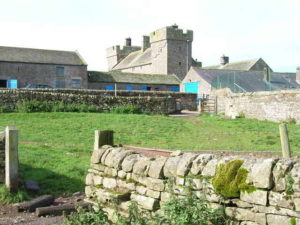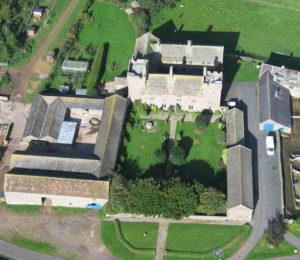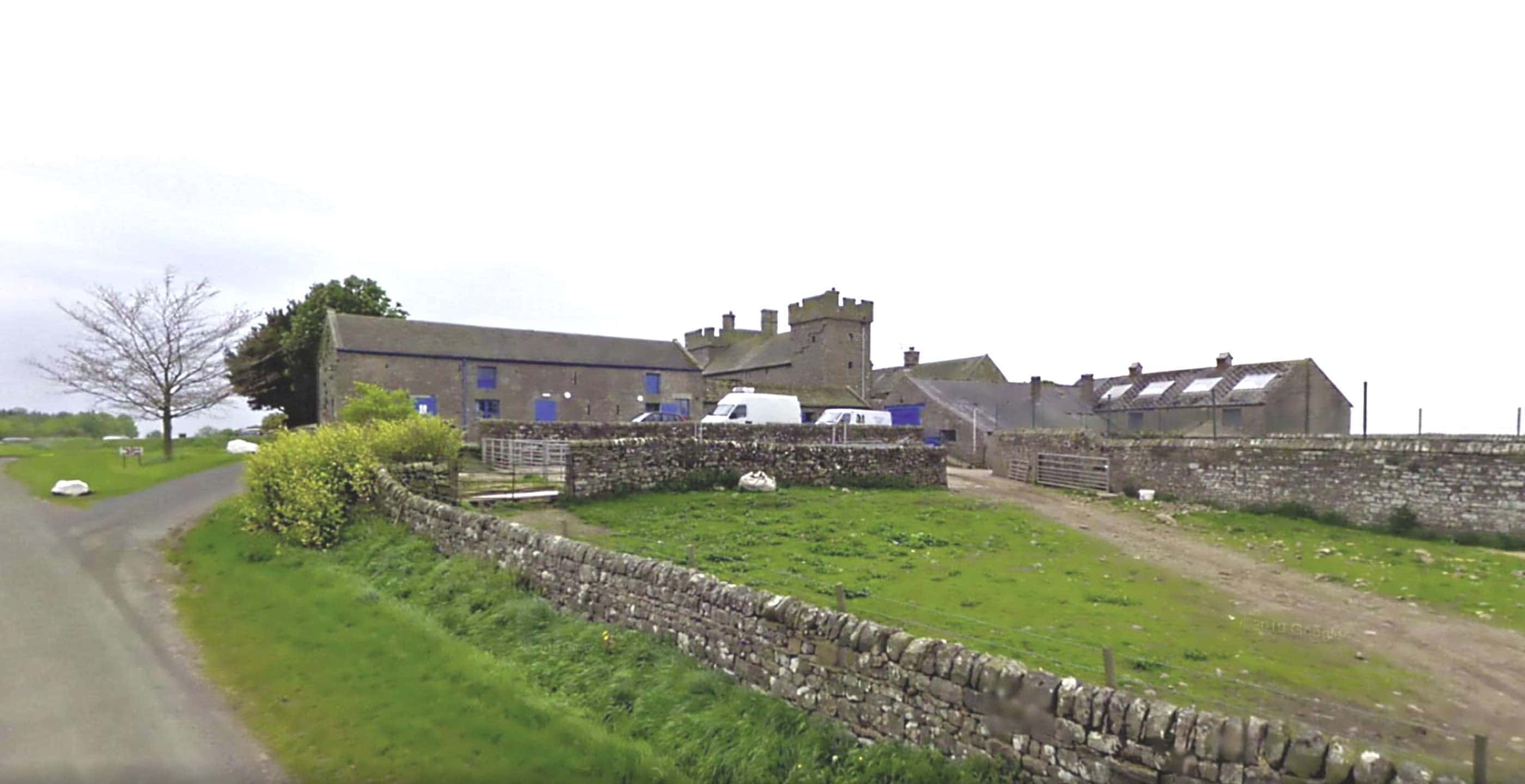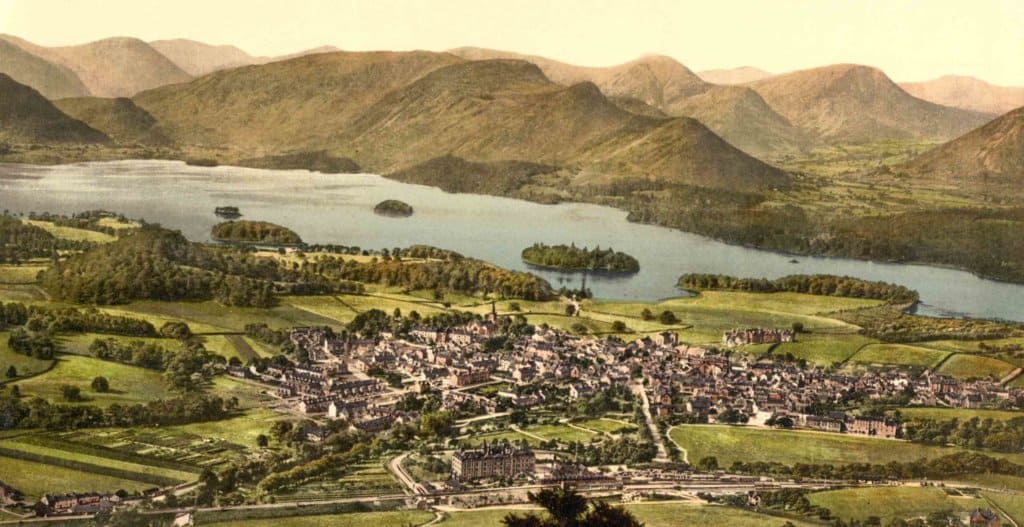Telephone: 0800 083 9659
Website: https://www.askertoncastle.co.uk/
Owned by: Askerton Castle Estate.
Public access: The castle is not open to the public.
A medieval fortified manor house, which is now part of an organic and rare breeds livestock farm. The original, unfortified house was built around 1300 at the northern end of Cumbria, three miles north of Hadrian’s Wall. The existing hall range dates to the 15th century, though parts of it may date to the previous century. Around 1500, two crenellated towers were added to the original range, one at each end of the hall. These are most likely to be the work of Thomas, Lord Dacre (1467-1535), Lord Warden of the West March, as part of general defence improvements along the border. His initials are on the southern tower, which is also known as the Dacre Tower, while the other tower is known as the Dovecot Tower.

Above: Askerton Castle. Attribution Oliver Dixon. Licensed under the Creative Commons Attribution-ShareAlike 2.0 license.
Dacre also added a new range and a NW wing with stables, which included accommodation for troops above. It has been suggested that Dacre intended Askerton to be used as a garrison to support the larger and more significant garrison at Bewcastle. It is also possible that a further tower was constructed which is no longer in existence. Dacre, becoming powerful in his own right, fell from grace after the northern uprising of 1569. His fortified manor house at Askerton was partly demolished before passing to Sir Thomas Carleton, another infamous border official. Askerton decayed further under Carleton, who was notorious for feathering his own nest, before being restored to a sound and defensive state by John Musgrave, who declared it fit once again to be occupied by “a Land Sergeant”, the Warden’s officer.
Eventually Askerton Castle, along with other Dacre properties, passed to the Howard family. Askerton Castle has undergone further remodelling in later centuries but still retains clear evidence of the stages of its development, and is a fine example of a fortified border manor house with towers. Although it is not open to the public, the current occupiers raise rare breed cattle, sheep, pigs and poultry, and supply organic produce to the local farmers’ markets in Cumbria and Northumberland.

Above: Askerton Castle. Attribution Simon Ledingham. Licensed under the Creative Commons Attribution-Share Alike 2.0 Generic license.
Top image: Google Street View



